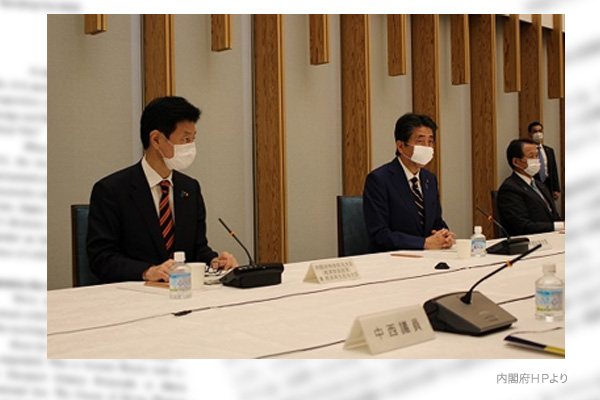While the novel coronavirus pandemic has gone rampant, Japanese people have avoided infection explosion and contained the virus in the initial phase of the battle. Yasutoshi Nishimura, minister in charge of Japan’s response to the pandemic, praised the strength of Japanese people on the GenRon TV Internet program.
Before Prime Minister Shinzo Abe declared a state of emergency on April 7, Nishimura said, he had a heated discussion with the prime minister on what message the government should send to the people.
Japan would have to cut human-to-human contacts by 80% and contain the virus to avoid an infection explosion. The cut would force the people to make considerable efforts. Could the government request such difficult cut? Nishimura said he asked the question to the prime minister. Abe then was quoted as answering: “The Japanese will surely be able to do that. Let us make the request.” Abe decided to rely on Japanese people’s higher public health consciousness, moral values and a sense of solidarity. Thus, the prime minister issued a state of emergency declaration in which the government only makes requests to the people in the absence of power to impose order, according to Nishimura.
Exposed deficiency of Japan’s postwar regime
Most of the Japanese people have accepted government requests and seriously implemented voluntary restrictions on their human contacts. The number of new infections has steadily declined. The government is about to partially lift the state of emergency. Japan may be the only country that can achieve such excellent results even in the absence of the government’s power to issue compulsory orders backed by punishments.
However, the fight against the coronavirus would last long. Could Japan’s current regime cope with the second or third coronavirus wave? Could Japan’s crisis management system remain untouched? Polls have indicated an interesting point regarding these questions.
Polls by both liberal and conservative media organizations following Prime Minister Abe’s state of emergency declaration found that some 80% of respondents gave high ratings to the declaration while viewing it as too late. The message from the polls may be that the prime minister should address any national crisis more quickly and decisively. It can be interpreted as criticizing the current constitutional and other legal structure that bars the government from doing so.
Pandemic paving the way for amending the constitution
With such situation in mind, Nishimura argued for developing a law system that would allow the government to issue compulsory orders. That the people’s assessment of the Abe cabinet’s crisis response is harsh indicates their criticism against not only Prime Minister Abe and his administration but also the deficiency of Japan’s postwar regime. In a country that bets its people’s lives on the international community’s goodwill without having military forces under a doctrine that human nature is fundamentally good, the government can do nothing more than the insufficient response as seen this time. This is the reason Nishimura’s argument for amending the pandemic act and empowering the government to issue compulsory orders to protect people’s lives and health is persuasive.
Arguments for amending the pandemic act involve arguments for putting an emergency clause into the constitution to support the act. Regrettably, a discussion on the constitutional amendment is still far from being active even within the ruling Liberal Democratic Party. I hope that Nishimura’s positive attitude toward amending the pandemic act should lead to a relevant constitutional amendment that would be too late but should be done in Japan.
Yoshiko Sakurai is a freelance journalist and President, Japan Institute for National Fundamentals.


